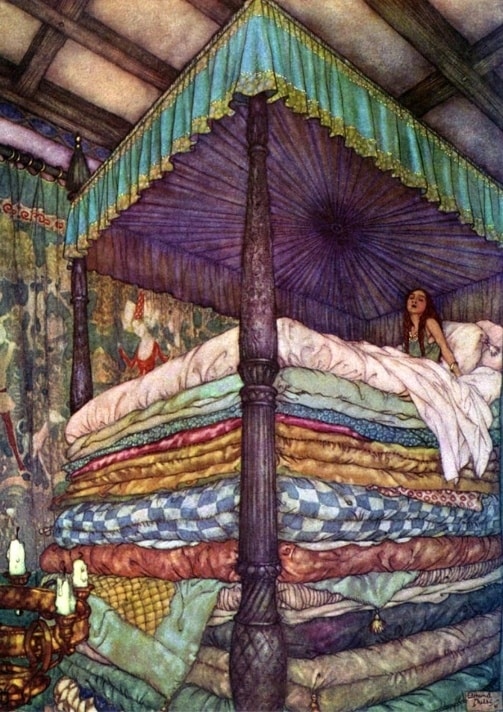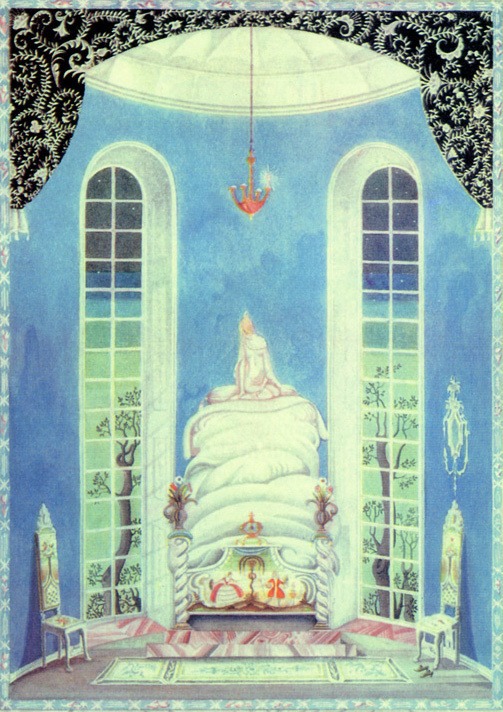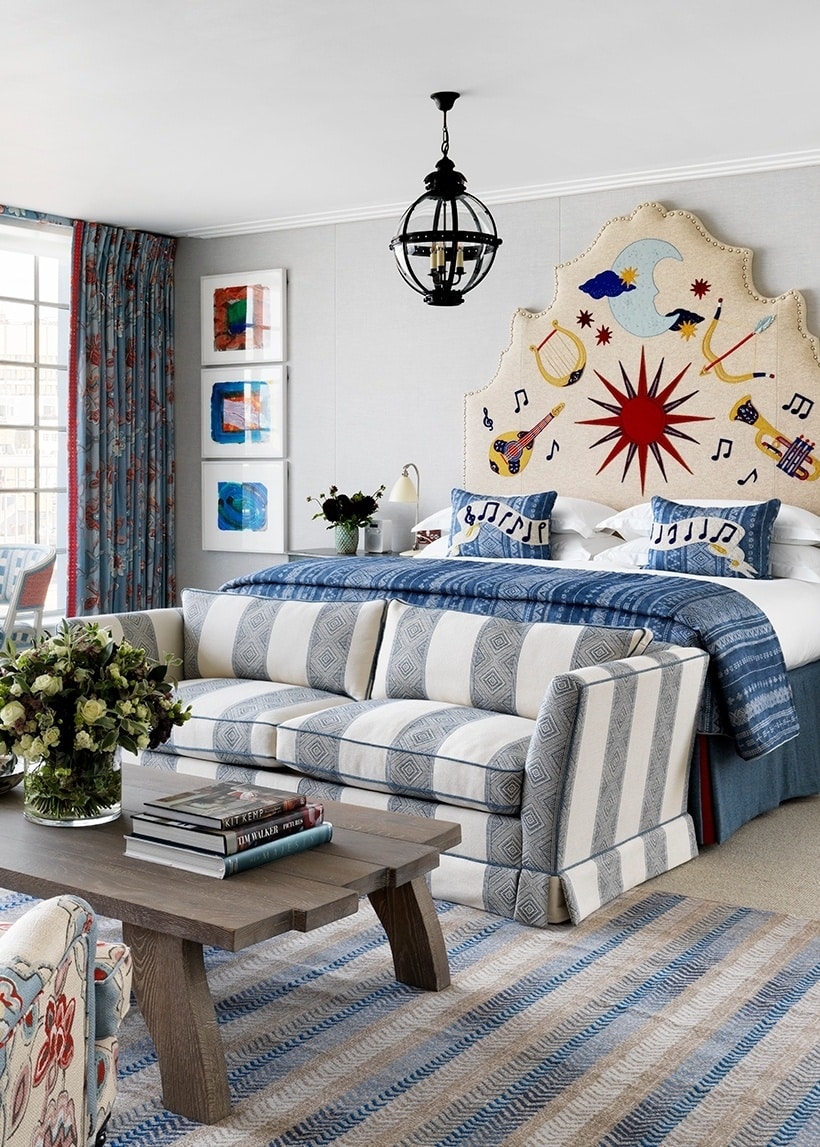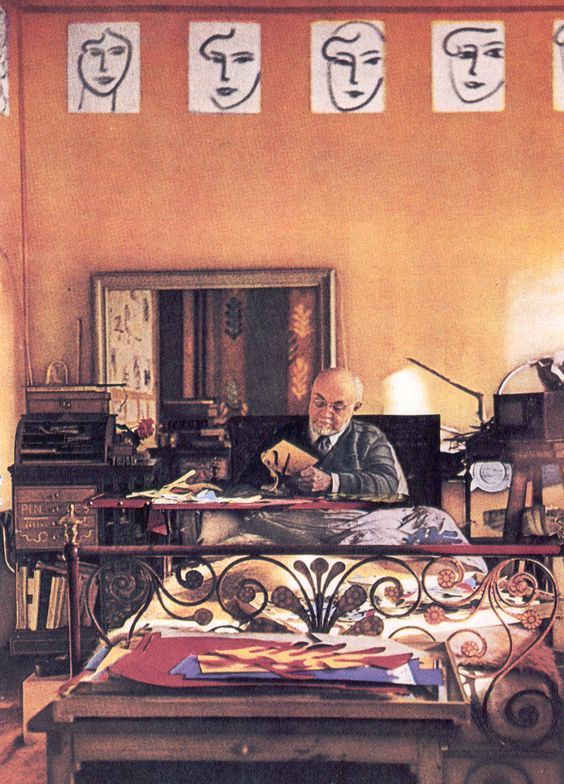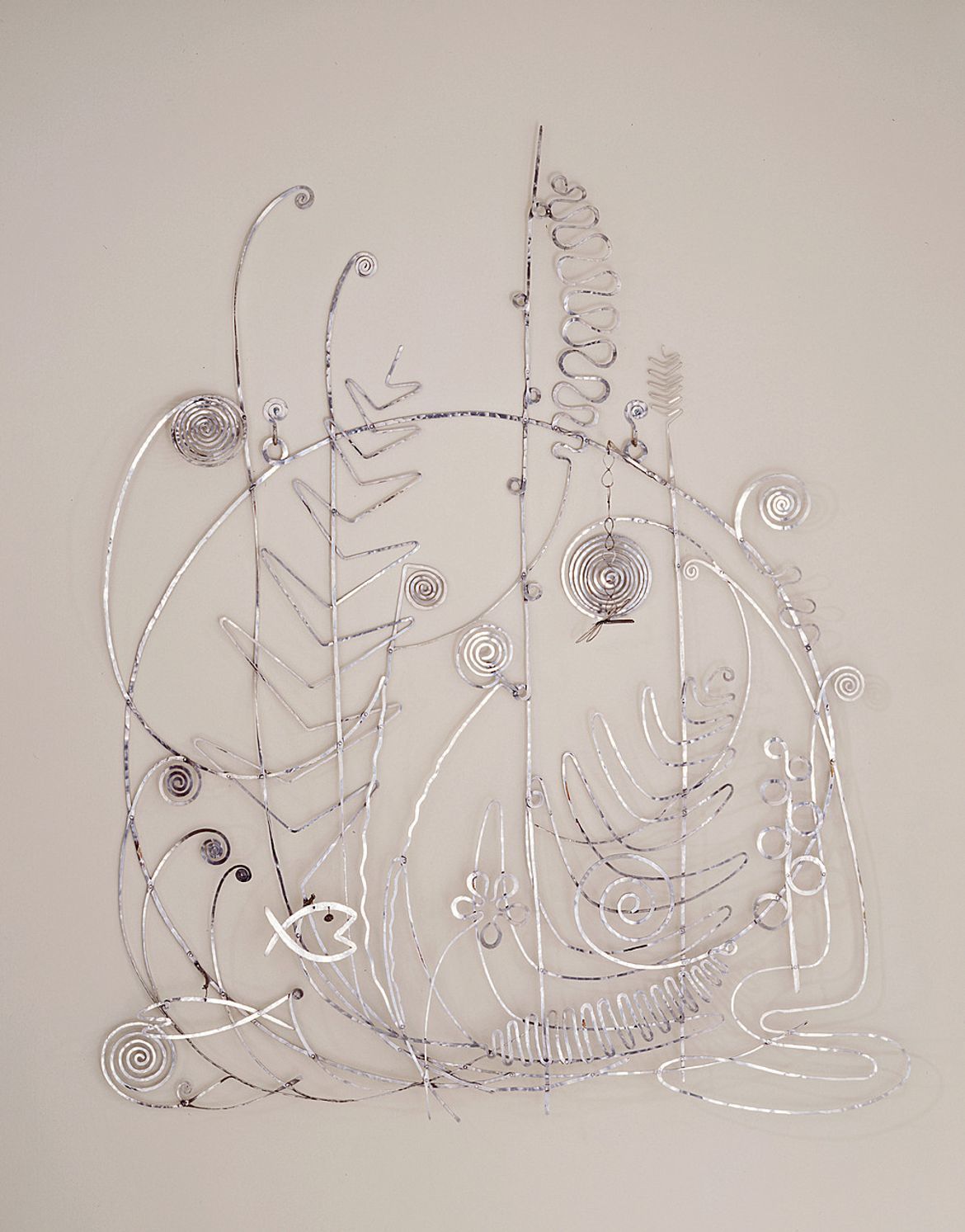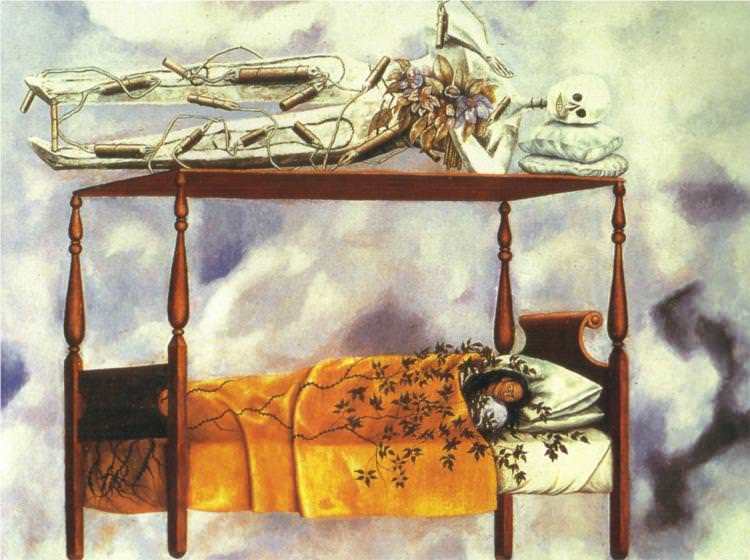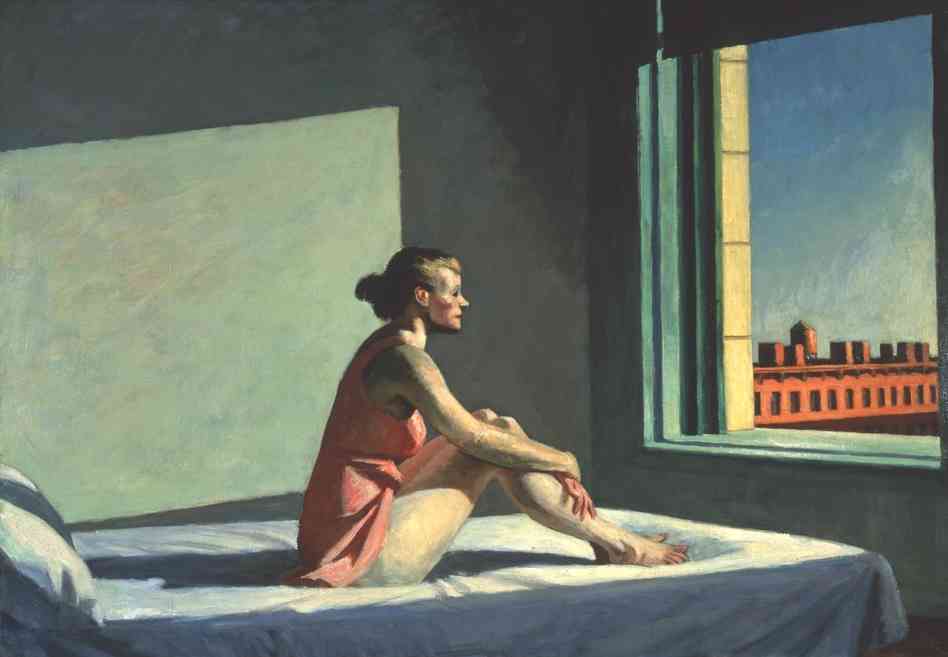Remember the story of the Princess and the Pea? Only a real princess could have felt the pea through twenty mattresses and twenty feather beds! Well, we took a leaf of out Hans Christian Anderson’s book when we made the decision to make our Firmdale beds almost 70cm high.
There is nothing quite like getting into a luxurious bed with crisp white sheets and cloud like pillows. The bed is the focal point in which we design a suite around and we really go to town with the headboard and bed cushion designs. We are always asked where you can get the Firmdale bedspreads, pillows and duvets, so now you can purchase your own from Shop Kit Kemp.
In New York in the winter of 1945–46, Peggy Guggenheim commissioned Alexander Calder to make a silver bedhead. I love his design combining creatures such as fish and insects with botanical motifs, as if celebrating the worlds under the sea and in the garden. Here, the two fish at the lower left are free-hanging elements. Calder is known for his incredible mobiles, but even in a stationary piece such as this, he is able to convey a sense of perpetual natural motion.
Perhaps we can introduce some free-hanging elements to our headboard designs!
It is no wonder that beds in all shapes and forms have been a popular subject for artists. Let’s have a look at some important ones that we can take inspiration from…
Firstly, here is Matisse in bed working on his cut-outs at his home in Vence, 1948.
I remember discovering Aubrey Beardsley’s graphic work when I was at school and I still return to it for inspiration now. This is a fantastic self-portrait in which he practically vanishes into his ornate and decadent bed complete with floral motifs and tassels. I want to design rooms for guests to feel like they can do just the same.
One can’t help think that Hopper’s paintings seem quite realistic during lockdown, depicting isolated figures and empty streets. When I look at this contemplative painting of a young lady welcoming the new day, I am reminded of what a luxury it is to have big windows, where light can flood the room. This is why in our new-build hotels we choose large Crittall windows that take up the whole of the wall.
This is a powerful painting featuring a bed. We know that Kahlo utilised the imagery of the bed to represent tragedy and pain after her catastrophic accident. This painting is a more humorous take, with a skeleton tangled in dynamite lying above the sleeping painter, suggesting it could blow at any moment; the unavoidable reality of death. In real life, Frida did have a papier-mâché skeleton named Juda atop the canopy of her bed. The tone of the painting is connected with Mexican culture, where the dead and the living coexist in harmony and feast on the Day of the Dead.
Robert Rauschenberg’s, Bed, 1955 is in complete contrast to the previous example. I love the energy and layering of materials and paint dripping. This piece is one of a group of his artworks known as his Combines, where he used everyday objects as art materials, blurring the distinction between painting and sculpture. Here he has stretched his actual pillow and bed on a canvas frame and then layered it in paint.
With COP26 and the fight for climate change on our mind, we will leave you with this image of John Lennon’s and Yoko Ono’s Bed-ins for Peace. In 1969, at the height of the Vietnam War, Lennon and Ono held two week-long peaceful protests from the comfort of their hotel beds in Amsterdam and Montreal. Derived from the “sit-in” as a form of peaceful protest, they invited the world press to witness their quiet demonstration.


